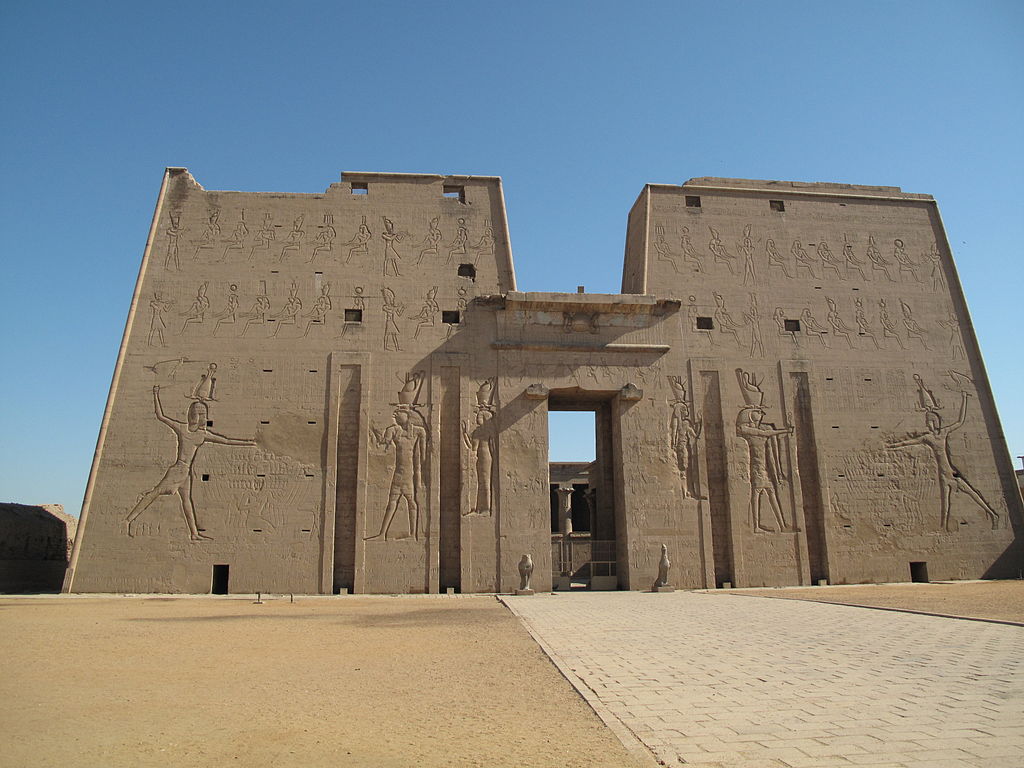Nestled on the west bank of the Nile River, Edfu stands as a testament to the architectural prowess of the Ptolemaic era in ancient Egypt. Home to one of the best-preserved temples in the country, the Temple of Edfu, this site takes visitors on a journey back in time to a period of flourishing culture and religious devotion.
The Temple of Edfu, dedicated to the falcon-headed god Horus, is a marvel of well-preserved ancient architecture. Constructed between 237 and 57 BCE during the Ptolemaic dynasty, it is one of the latest temples built in ancient Egypt and showcases a harmonious blend of traditional Egyptian design with Hellenistic influences. The grand entrance to the temple is marked by a towering pylon adorned with reliefs depicting scenes of the pharaohs making offerings to the gods.
The inner courtyard, surrounded by colonnades with intricately carved capitals, sets the stage for the majestic Hypostyle Hall. This vast hall, supported by massive columns, features detailed reliefs and inscriptions that narrate the mythical struggle between Horus and Seth, providing valuable insights into ancient Egyptian religious beliefs and rituals.
One of the highlights of the Temple of Edfu is the sacred sanctuary, where a black granite statue of the god Horus once stood. The naos, or innermost sanctum, was a revered space accessible only to priests and pharaohs, symbolizing the intimate connection between the mortal and divine realms. Despite the temple’s age, the level of preservation allows modern visitors to appreciate the original colors and details of the reliefs adorning its walls.
The construction of the Temple of Edfu was not without challenges. The temple’s foundations, laid by Ptolemy III Euergetes I, were later completed by subsequent Ptolemaic rulers, including Cleopatra VII and Ptolemy XII. The temple’s intricate reliefs provide valuable historical and cultural insights, documenting not only the religious practices of the time but also the political dynamics of the Ptolemaic period.
Beyond its historical significance, Edfu offers a glimpse into the daily life of ancient Egyptians. The nearby town, located on the site of the ancient settlement of Djeba, showcases remnants of residential structures, streets, and even a Nilometer—a device used to measure the river’s water levels during the annual flood.
The Temple of Edfu is a vital stop for those cruising the Nile, and its preservation owes much to the river’s influence. Unlike many other temples that succumbed to rising waters due to the construction of the Aswan High Dam, Edfu’s elevated location spared it from submersion, ensuring its survival for future generations.
In conclusion, Edfu stands as a remarkable testament to the cultural and architectural achievements of the Ptolemaic period in ancient Egypt. The Temple of Edfu, with its grandeur and state of preservation, invites modern visitors to connect with the past and appreciate the enduring legacy of Egypt’s rich history. It remains a captivating destination, allowing travelers to immerse themselves in the splendor of a bygone era along the banks of the timeless Nile.

